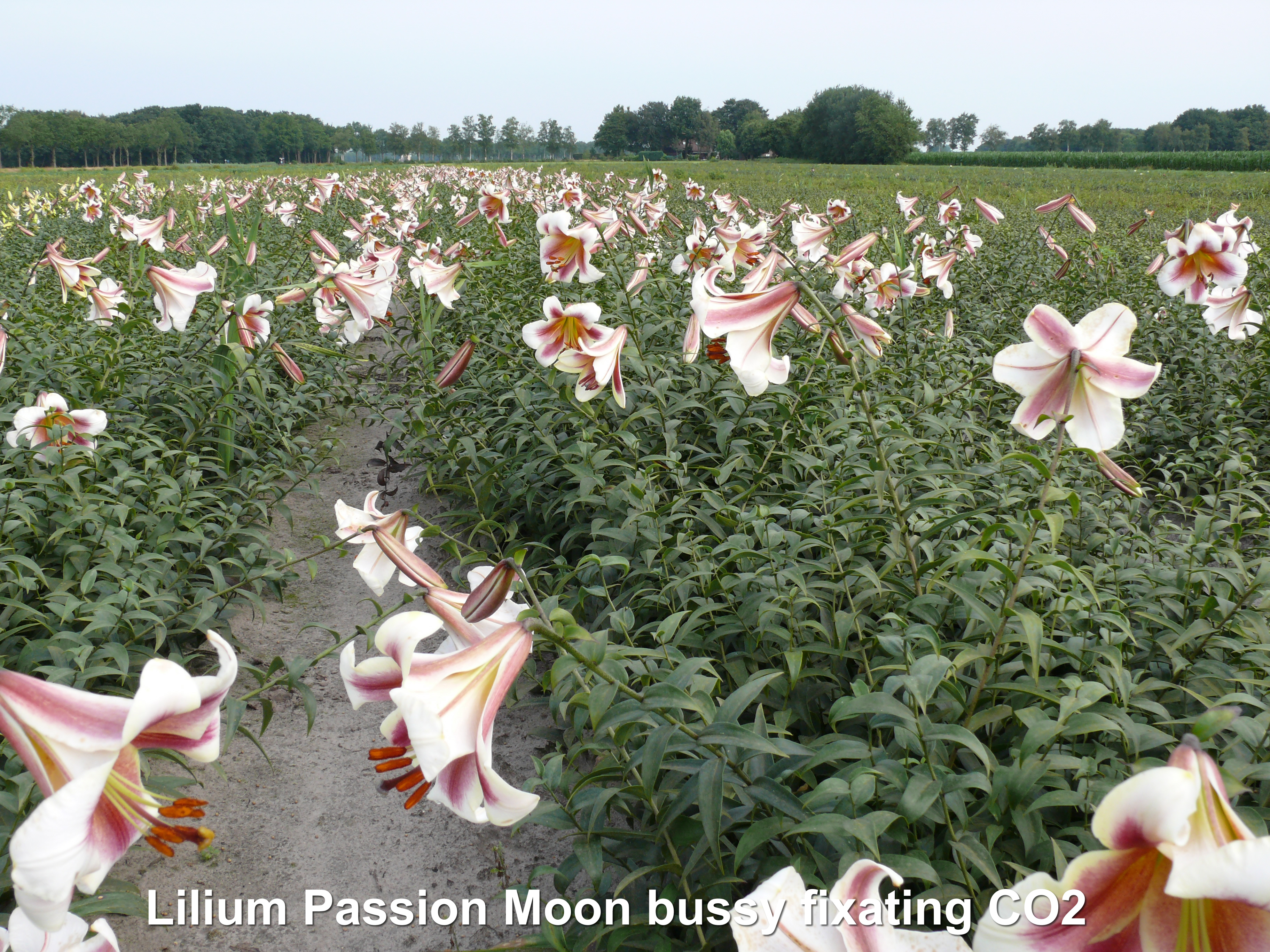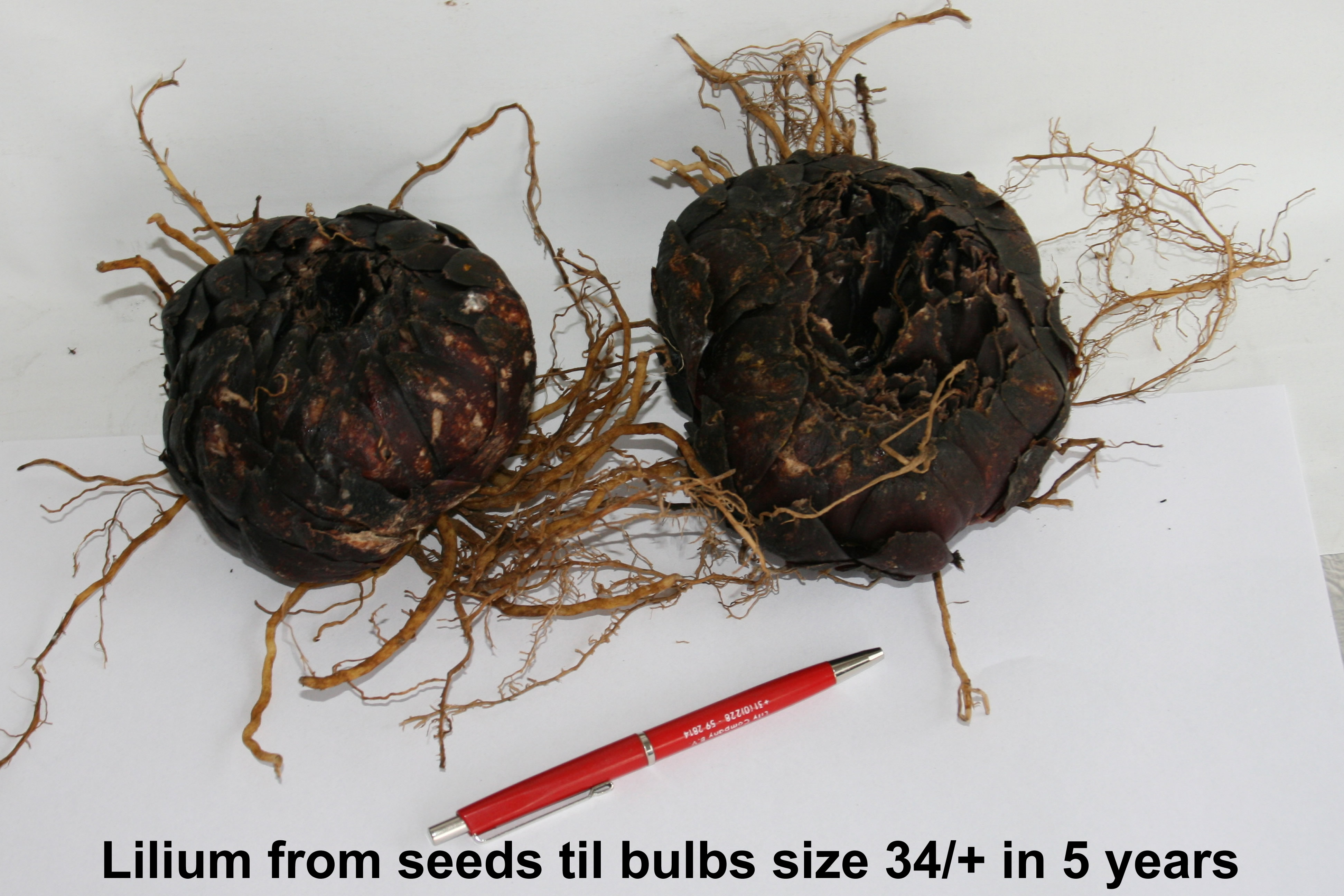12-03-2021
CO₂ fixation of lily cultivation.
The garden lilies that we grow are not only beautiful, but if they are well cared for, they continue to grow indefinitely and can multiply in various ways and therefore they permanently store CO₂. The calculation example below shows how much CO₂ our lily cultivation captures each year.

We grow 110 ha of lilies. This adds up to 110 x 2,268 = 249,480 kg of fixed organic dry matter. Every year we store 286.902 kg CO₂ in our product in this way. In addition, the crop residues from the lilies that remain in the field after harvest add to an effective organic matter increase of 450 kg EOS / ha. This organic matter promotes several important functions in the soil. Organic matter is the main food source for all soil organisms that depend on organic matter for their energy and food supply. Organic matter plays a very important role in soil fertility. This applies to the supply of nutrients, the moisture and air balance and the soil structure. Organic matter also plays a role roll at the temperature of the soil. Organic matter in the soil is dark in color and therefore absorbs heat easily, so dark-colored soils heat up earlier in the spring than light-colored soils.

The great thing is that 95% of the bulbs grown and sold by us are intended for garden and park planting, so the stored CO₂ is not released after sale, but the bulbs sold by us, on the other hand, grow in the various garden and park plantings formany years after planting and fixes CO₂ again because it keeps them growing.
Explanation of the calculation of fixed CO₂ perhectare:
Given: Many agricultural crops are cultivated toprovide high production and therefore assimilate a lot of CO₂. Calculations show that a good crop of sugar beet with a production of 65 tons of beets, 40 tons of leaves and 30 tons of roots per hectare, produces about 23 tons of drymatter. With this production, approximately 7,500 kg C or approximately 20,000kg CO₂ are absorbed per hectare. The difference between 7,500 and 20,000kg is the oxygen that is largely returned to the environment.

To illustrate the value of these figures for the environment, we can calculate that an average private car driver who uses about 1000 liters of petrol per year (12 to 15,000 km per year) has an emission of approximately 750 kg C or2,000 kg CO₂. Popularly we can say that one hectare of sugar beet binds about as much CO₂ as ten cars produce per year. Calculations further show that the sugar beet crop is not only at the top for the carbon binding capacity. A good crop of winter wheat and maize does not lag much behind, and good grassland can also have a high dry matter and thus a high carbon binding capacity. Our agriculture therefore ensures that a significant part of the CO₂ emissions are tied back.
Source: https://www.trouw.nl/home/biet-bindt-kooldioxyde-beter-dan-bos~a64c0fdc/
Given: At approximately 23 tons of dry matter, 7500 kgC is absorbed or approximately 20,000 kg CO₂
Given: At approximately 23 tons of dry matter, 7500kg C is absorbed or approximately 20,000 kg CO₂
=>23,000 kg = approximately 20,000 kg CO₂
=> 1 kgdry matter = 1.15 kg CO₂
Given: Lily residues contain 21% dry matter * (sourceKAVB energie_uit_bloembolresten (1).pdf)
Given: 932 ha of lilies yields 10,067 tons ofharvested product (sourcehttps://www.greenportnhn.nl/sites/default/files/nieuws/rapport_agrarische_vervoersstromen_greenport_nhn.pdf ) this is 10.8 tons per ha or10,800 kg per ha. This corresponds to 2,268 kg dry matter per hectare (21%)
Given: Inaddition, tulips, lilies, hyacinths and daffodils produce approximately 3,670,3,860, 2,400 and 1,320 kg of dry matter per hectare, respectively. (source http://edepot.wur.nl/294191 )
* Dry matter content
In a field moist sample, the moisture contentis determined by increasing the temperature
as a result of which the water and other volatile substances with the exception of water of crystal lization disappear from the sample. It
mass difference between before and after drying is a measure of moisture content. This can be converted
to the dry matter content.
Given: Lily effective organic matter ** delivery per hectare per year is 450kg
** Organic matter
The sample is first dried and then calcined at 550 ° C. The mass difference between before and
after annealing is a measure of the loss onignition. The organic matter content is obtained from the
loss on ignition after a correction for theclay content.
« Back to News